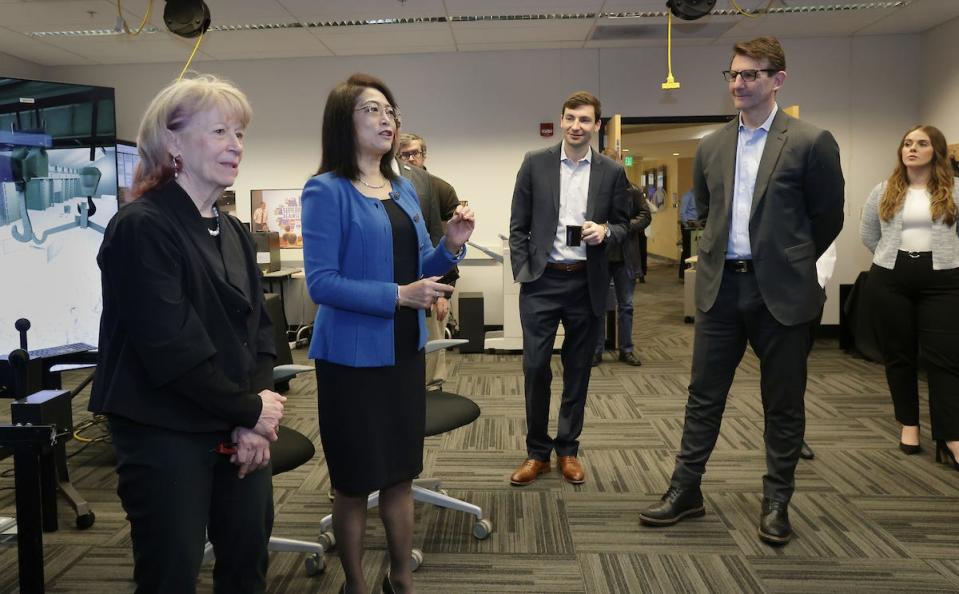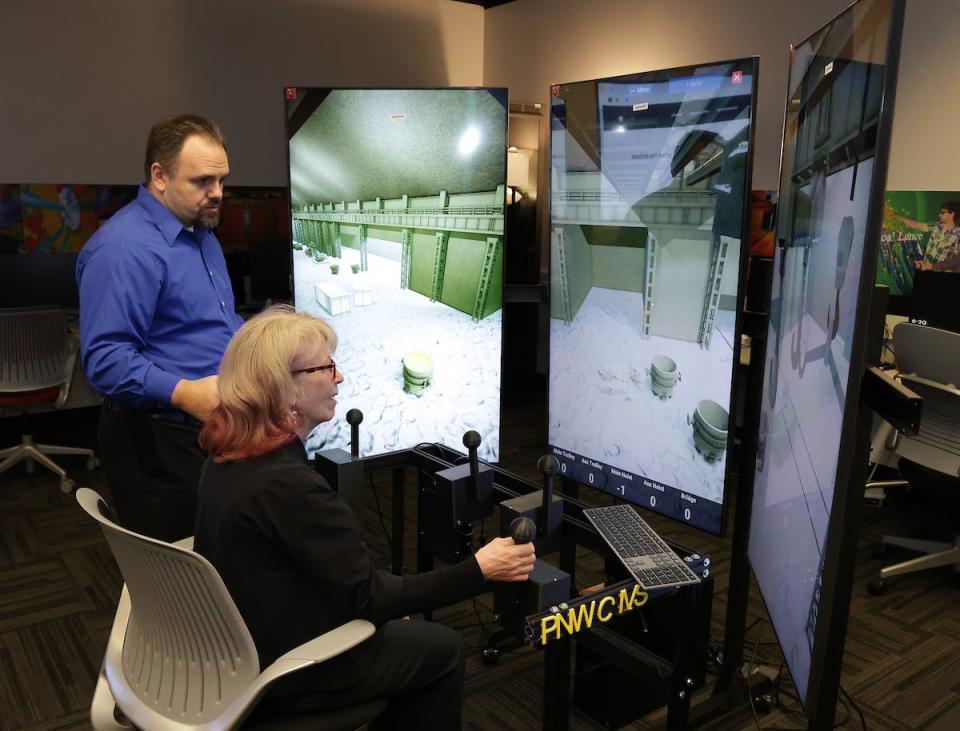USDOE awards Purdue Northwest $7 million to study decarbonization in steel industry
Purdue University Northwest is utilizing a new federal grant to develop new technology to reduce greenhouse gas emissions from steelmaking.
The U.S. Department of Energy awarded the university’s Center for Innovation through Visualization and Simulation (CIVS) $7.1 million in February to work on trials to reduce carbon releases in an industry that makes up about 8% of the total global emissions.
Chenn Zhou, founding director of CIVS, and her team create virtual models and simulators to help steelmakers study and optimize their process for efficiency. She said CIVS has been a leader in decarbonization efforts in the industry by working with more than 70 organizations over nearly 20 years.
“We make sure to keep working at the forefront of technology,” Zhou said, “by putting the focus on innovation, decarbonization and workforce development.”

The center’s recent grant will fund trials focused on creating more efficient electric arc furnaces. These furnaces use electricity to melt scrap steel and other metals as opposed to blast furnaces, which use coke or fossil fuels.
Zhou and CIVS’s project will build on prior work with computer simulations to optimize and create efficiency in the furnaces. The goal of the trials and grant is to reduce direct emissions by 40%.
There are currently around 155 electric arc furnaces in operation throughout the U.S., Zhou said, and the grant will help her team focus on the refining process where most of the emissions are generated. During that process, natural gas and other hydrocarbons are injected into the melted metals to create steel alloys.
The largest steel producer in the U.S., Indiana ranked as the 8th largest carbon dioxide emitter in the country for 2021, according to the U.S. Energy Information Administration.
The industrial sector in Indiana released 43.4 million metric tons of carbon dioxide emissions in 2021, according to the EAI’s the latest data. This makes up about 26% of the total emissions in Indiana, with the largest source of emissions coming from power generation.
The simulation and data-driven approach of the new research will provide real-world solutions, Zhou said, and could not be accomplished without industry collaborations and community partners.
“We 're focused on impact," she said.
Study: Indiana at risk of losing its industrial dominance if it doesn’t decarbonize
U.S. Congressman Frank Mrvan, representing Indiana’s 1st congressional district, applauded Zhou and her team’s decarbonization efforts in a news release.
“I am grateful for the tremendous success of CIVS and the ability of this esteemed research program to continue to improve the ability of Northwest Indiana and our nation to make the most energy-efficient steel in the world,” Mrvan said.

Neal Elliott, director emeritus at the American Council for an Energy-Efficient Economy (ACEEE), called the new CIVS research supported by the grant an “absolutely promising investment for lowering emissions.” His group is an energy and climate think tank that focuses on policies, programs and markets related to energy efficiency and has been working with the steel industry for about 25 years.
The CIVS’s proposed goal of a 40% reduction in emissions is plausible, Elliott said, and will not only cut emissions, but also reduce manufacturing costs and create a better product.
“This is not energy efficiency in the way you think of a lightbulb,” Elliot said. “This is really that concept of: you’re trying to really optimize the process so that you’re achieving sort of all of these benefits at the same time.”
Karl Schneider is an IndyStar environment reporter. You can reach him at karl.schneider@indystar.com. Follow him on Twitter @karlstartswithk
IndyStar's environmental reporting project is made possible through the generous support of the nonprofit Nina Mason Pulliam Charitable Trust.
This article originally appeared on Indianapolis Star: New study at Purdue Northwest aims to cut steel industry emissions

